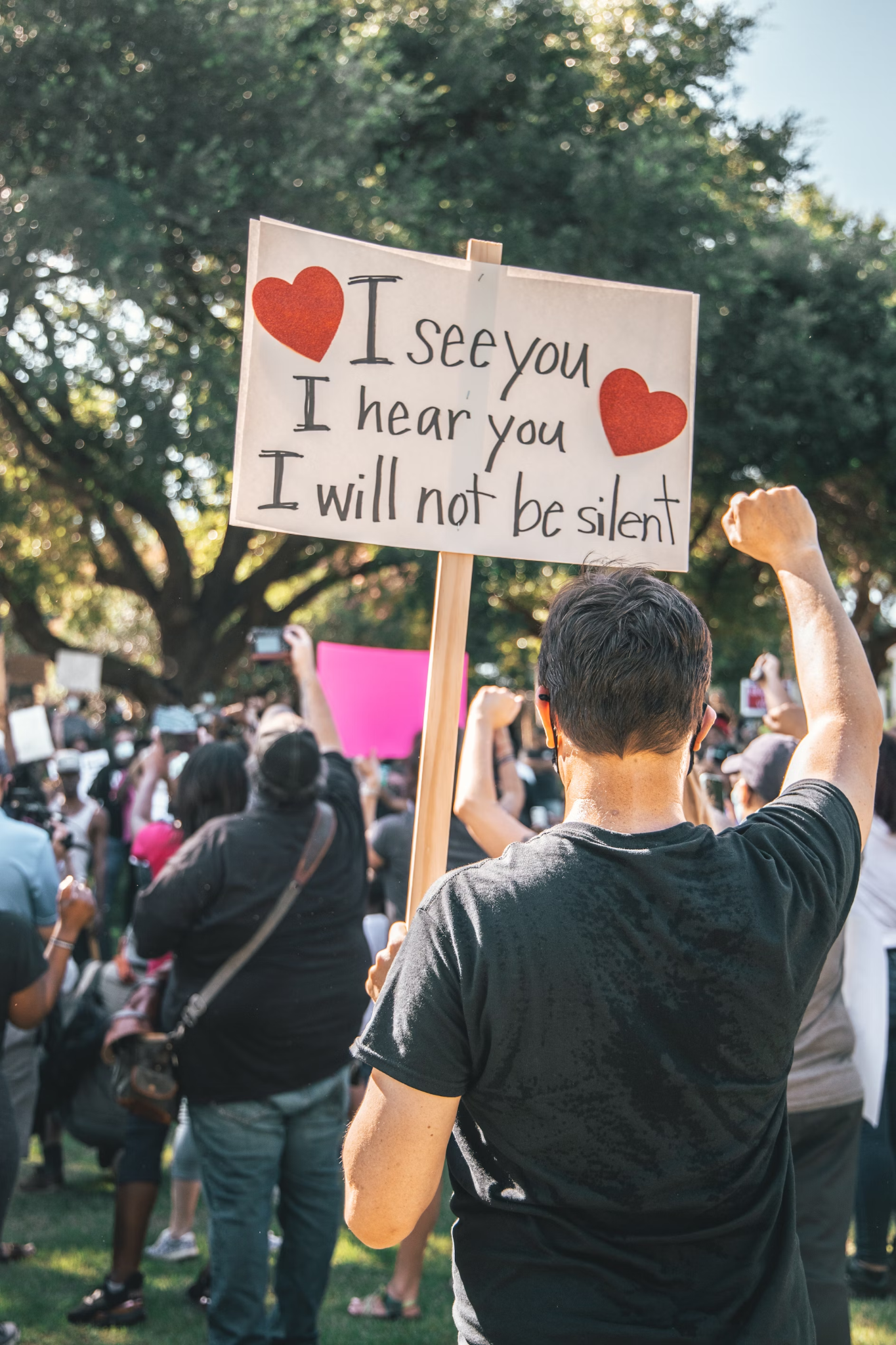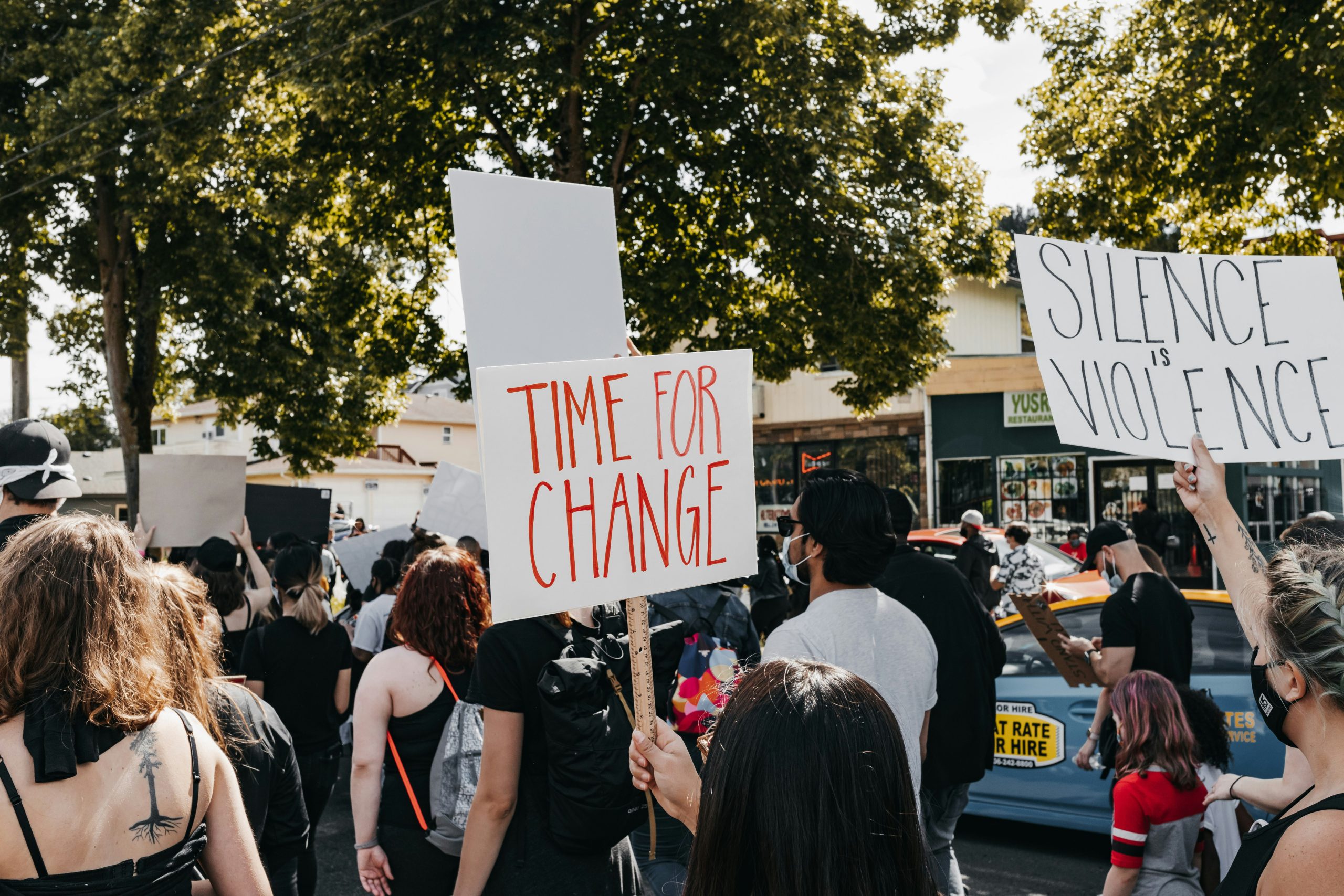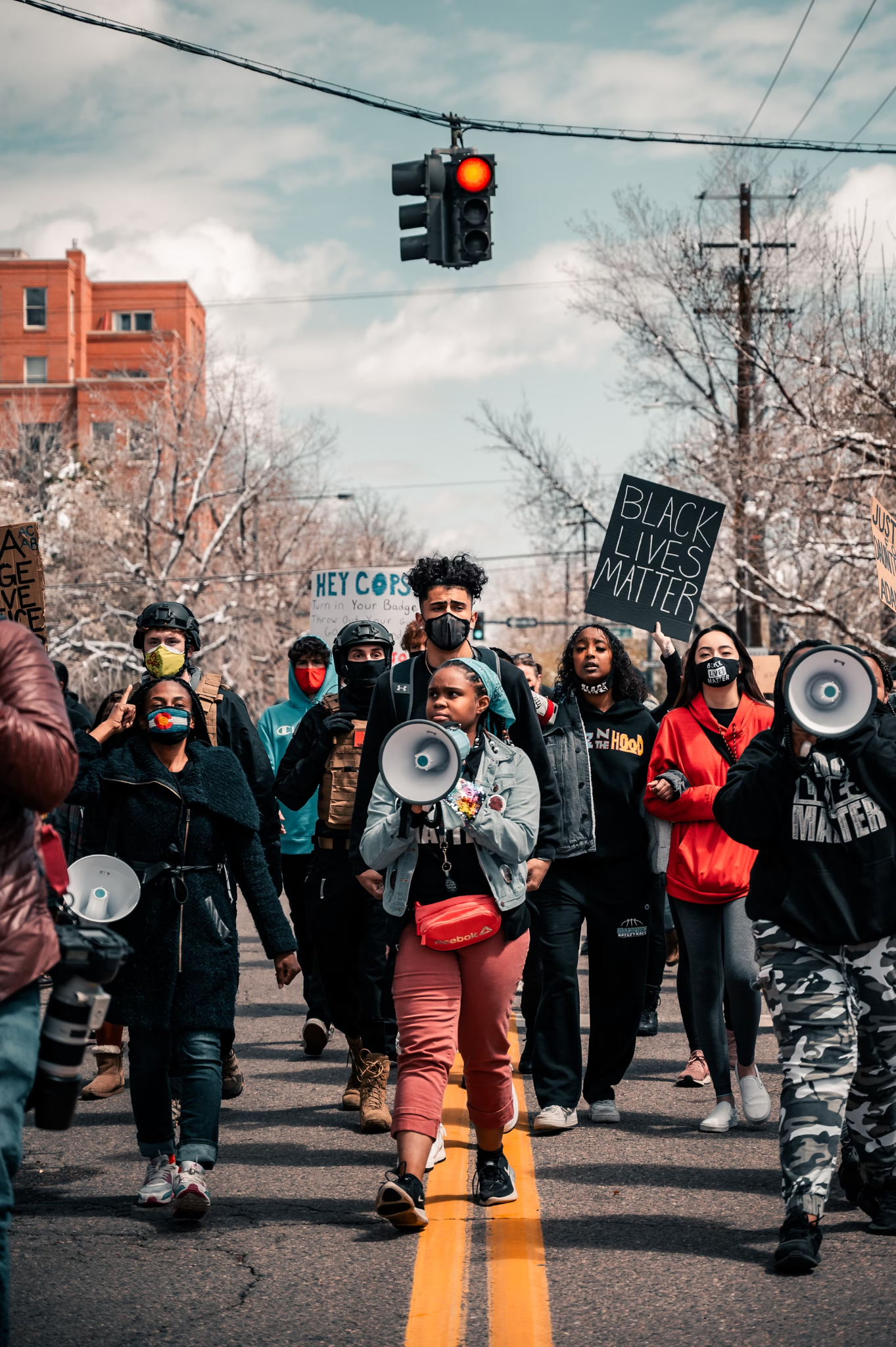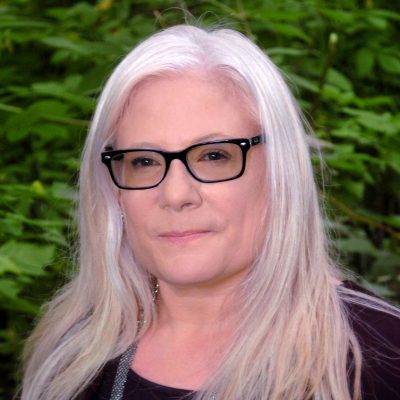13 Community Action and Activism
Bernadet DeJonge; Nikki Golden; and Cailyn F. Green
- The reader will explain different kinds of activism.
- The reader will describe how activism impacts social change.
- The reader will analyze theories of social change.
Systemic racism, discrimination, power, and privilege impact our society in various ways. Marginalized individuals may only sometimes be aware of how their experiences are connected to larger systems of discrimination. However, it is essential to recognize that, over time, individual marginalization can become a structural problem that affects entire communities. Individual and systemic factors contributing to discrimination must be addressed to create a more equitable and just society.
As people learn about systemic social justice issues, they often want to do something to impact injustice. Social movements such as the women’s rights movement, the civil rights movement, the disability justice movement, and the Black Lives Matter movement all confronted individual and systemic injustice. Countless individuals, including Martin Luther King Jr., Elizabeth Cady Stanton, and Judy Heumann, have dedicated their lives to fighting for social justice causes. While the United States still struggles with systemic inequity, social change through activism has occurred throughout the complex history of the United States. This chapter examines how social change comes about and discusses people’s different roles in social change.
Activism and Social Change
The Oxford English Dictionary (n.d.) defines activism as “the policy or action of using vigorous campaigning to bring about political or social change.” Appadurai (2013) defines activism as “the practice of addressing an issue, any issue, by challenging those in power” (2:25). Activism occurs both in personal and structural ways. According to Appadurai, Rosa Parks became an individual activist when she refused to move to the back of the bus. Additionally, the 1999 WTO protests in Seattle exemplified structural activism by challenging the global economic systems and institutions that reinforce inequality.. While these two events differed in scope and scale, both shaped social change for generations. Appadurai states that anyone can be an activist.

Video: Danger of a Single Story by Chimamanda Ngozi Adichie
Discussion Questions
- How does the video The Danger of a Single Story reflect the concepts of activism and social justice?
- Discuss the importance of a single story and the importance of collective stories. How do these concepts impact the experience of activism?
Activists work towards social change in various ways, including conventional and radical activism (Harvey, 2023; Human Rights Careers, n.d.). Conventional activism usually occurs through more traditional, legal means and often outside the public view. Conventional activism includes work in policy matters, media promotion, and networking with other advocacy groups. Radical activism is usually more extreme and, sometimes, through non-legal means. Radical activism is often more visible, generally through media coverage. Examples include sit-ins and protests (Johnston & Gulliver, 2022).
The heart of activism is people. Activists fight for their beliefs in various social, political, and cultural climates. Being an activist does not require protesting, subject expertise, or a naturally loud voice (Witter, 2023). Other ways to be a social activist include boycotting, running for office, policy advocacy, social media campaigns, fundraising, letter writing, and volunteer work (Anti-Defamation League, 2017; Harvey, 2023).
Video: What is Activism? by Anjali Appadurai
Discussion Questions
- Discuss the differences between conventional activism and radical activism. Is there a place for both? When might they conflict?
- What kind of activism have you participated in?
Moyer (2001) identified four individual activist roles during the change process. Social movements require all four roles: citizen, reformer, rebel, and change agent.
Citizen: To be effective, citizen activists must gain the community’s respect. Effective citizen activists promote values such as freedom and non-violence while being willing to resist unethical or unfair institutional policy and practice. Ineffective citizen activists do not recognize the privilege held by the elite or corrupt power structures. Ineffective citizen activists often believe whatever they are told and give automatic obedience to those in power (Moyer, 2001).
Reformer: Reformer activists work within systems like government and corporations to enact change. Effective reformer activists enact change through lobbying, legal action, support for political candidates, and organizing rallies and protests. Ineffective reformer activists utilize a more patriarchal leadership model and struggle to remain flexible with a social movement. Ineffective reformer activists’ leadership style does not promote actual democratic values, and they often take a middle ground or promote minor changes. Ineffective reformer activists frequently identify more with status quo power structures than proposed just changes (Moyer, 2001).
Rebel: Rebel activists stand up to institutions of power. They say “no” to current power structures. Effective rebel activists recognize systemic power issues and put those issues at the forefront of their action. Effective rebel activists are individuals who often take risks and find rebelling against power to be exciting. They believe truth is relative and are mindful of the best strategies for change. Ineffective rebel activists act without strategy. They are often disruptive and take an “any means necessary” approach to change. Ineffective rebel activists are often on the fringe of social movements. They have an attitude of absolute truth and usually put themselves and their ego before social movements (Moyer, 2001).
Change Agent: Change agent activists promote shifting paradigms towards social issues. They bring others into social movements. Effective change agent activists provide education and participatory opportunities for others, often striving to connect existing social structures. Ineffective change agent activists do not understand how sustainable system change occurs and instead promote a perfect, utopian version of social change. Ineffective change agent activists often focus on a singular issue without considering the overlap of multiple systems. In addition, they may promote more minor changes instead of large-scale paradigm shifts and have a patriarchal philosophy of leadership (Moyer, 2001).

Discussion Questions
- Which of Moyer’s (2001) roles in social change movements aligns best with your strengths and personality?
- Which of Moyer’s (2001) roles least aligns with your strengths or personality, and why?
- Why is it important to understand and identify different roles in social change movements?
- How can recognizing these roles enhance the effectiveness and cohesion of a social change movement?
Tension Between Roles
Hammond (2019) defines an activist as someone who “sees a problem in the world, believes the situation could be different, and takes action in the direction of the change they want to see” (p. 1). Each activist has an individual worldview and often acts on similar issues differently, even when the end goal is the same. These differences can lead to tension within social movements. Hammond argues that this tension must be resolved for activism to be effective. Activists must work to communicate with each other to avoid inter-activist conflict. Some suggestions to relieve this tension include increasing self-awareness, understanding the process of a social movement, connecting to other activists, having a strength-based approach, and collaborating through the conflict (Hammond).
Hammond (2019) utilizes Moyer’s activist roles to exemplify inter-activist tension. Citizen and change agent activists often have tension regarding paradigm shifts, and reformer and rebel activists often have tension regarding strategies to enact change. For example, a reformer activist working on a policy change may find a rebel activist organizing a large-scale protest ineffective or detrimental to impacting change. Moyer (2001) argues that all roles must be present for activism to be effective. Thus, tension between roles must be acknowledged and managed as part of social change (Hammond, 2019).
Discussion Questions
- What role tension might you experience based on your preferred role from above?
- How can you mitigate tension between roles?
Social Change Theory
Social change theories examine the social changes in human interactions, cultures, and social institutions over time. Social change is complex and often slow (Human Rights Careers, n.d.).
Moyer argued that there are eight stages of social movements (Rose, 2012). They are:
- Normal Times—politically quiet times. Violations of freedom and beliefs exist, but no action is taken.
- Prove the Failure of Institutions. The public realizes that institutional and governmental policies violate their core beliefs and values and that government power is being used unfairly.
- Ripening Conditions. As the public becomes more discontent about societal conditions, more significant historic developments occur. Grassroots organizations form, which increases the public’s discontentment and encourages the public to believe change can happen.
- Social Movement Take-Off. The social movement receives the public spotlight. Issues previously not at the forefront are suddenly headlines in the news. The public has conversations about the issues. A triggering event often fuels social movement take-off.
- Identify Crisis of Powerlessness. Activists worry that their efforts could be more effective and that they are futile. Activists believe those in power are too strong and that the movement has failed.
- Majority Public Support. The issue shifts from a short-term novelty to a long-term one and gains public support. The longer-term process of political and policy change begins.
- Success. Activists can envision the long-term success of a social movement. Success can take three forms: dramatic showdown, quiet showdown, or attrition.
- Continuing the Struggle. With success comes a return to normalcy, and the process begins again.
- Where do you think we are in the stages of social movement?
- Do you foresee a change in where we are in the stages of social movement? Discuss this.

Radical Flank Effect
The radical flank effect (RFE) considers how radical activists impact social movements. According to the RFE framework, there can be positive or negative flank effects. A positive flank effect occurs when the moderate activists look less extreme compared to the more radical ones. This may happen during a crisis, and the authorities work with the more moderate activists on potential solutions. A negative flank effect occurs when radical activists discredit a social movement. A negative flank effect can lead to collaboration with authorities, such as policyholders and politicians, which is less effective for more moderate activists. Many social movement activists fear the negative flank effect and thus often overlook the power of the positive flank effect (Hammond, 2019).
Momentum in Social Movement
In examining past social movements, Engler and Engler (2014) identified a difference between the initial momentum of a popular social movement and the long-term policy and structural change made through steady work on organizational structure, politics, and policy. There are four stages through which social movements progress: emergence, coalescence, bureaucratization, and decline. At times, movements can experience a lull due to widespread discouragement. This differs from individualized burnout. Some examples of social movements that have experienced lulls include Occupy Wall Street and the Climate Change Movement (Engler & Engler).
Both individual and systemic changes impact long-term cultural shifts. Hebert-Dufrense et al. (2022) theorize that achieving social change requires individual and policy change. In their research, Hebert-Dufrense et al. suggest that the best way to enact social change is for individuals and institutions to make simultaneous changes. This is a parallel process in which an individual impacts policy and, at the same time, policy impacts an individual.
Video: The Civil Rights Movement
Video: Occupy Wall Street
Video: The #MeToo Movement
Video: Black Lives Matter Movement
Video: The Disability Rights Movement
Discussion Questions
- What are some examples of conventional activism in these videos?
- What are some examples of radical activism in these videos?
- What examples do you see of the four stages of social movement in these videos?
- What might be the unintended consequences of these movements?
- What tensions exist in these movements?
- How have social movements of the past influenced each of these movements?
Thoughts from the Author
A book (Goldblum & Shaddox, 2021) I read while writing this text gave specific, actionable, and individual things that an individual can do to impact change. This format stuck with me throughout the writing of this text and continues to do so today. It led me to think a lot about how social change comes to be. In political commentary, we hear about community organizers, and we hear on social media and TikTok videos about people who are standing up to systemic racism, ableism, heterosexism, sexism, power, and privilege. I wanted to take some time in this text to make sure we addressed how social change occurs. It has been an exciting exercise in personal activism to think about my efforts and where and how I can continue to be an activist to impact social issues I care about. Increasingly, I realize how much my actions help me feel like I can make a difference. I try to shop locally, boycott stores that conflict with my ethical beliefs, call out “isms” when I see them, frame my work through a social justice lens, and have considered running for local office. These small things, even while systemic issues loom, might impact social change in some small ways. I like to think I can be an activist.
Sincerely,
Bernadet DeJonge
- What do you do that might be considered activism?
- What new ways can you be an activist?
- What actions can you take to advocate for social justice?
- Considering Moyer’s eight stages of social change, think about different social movements you have experienced in your lifetime. Does this model ring true?
- How might understanding social change theory impact your ability to make a difference?
- Describe your personal theory of social change. How do individuals make change?
- How does this chapter on social change connect to different social justice movements?
- Use the video examples provided to think about social change. Identify the roles and stages of social change in each movement.
References
Anti-Defamation League. (2017). Ten ways youth can engage in activism. ADL Education. https://www.adl.org/resources/tools-and-strategies/10-ways-youth-can-engage- activism
Appadurai, A. (2013, May 25). What is activism? [Video]. TedxYouth. https://www.youtube.com/watch?v=zDVA7r7r0d0
Engler, M., & Engler, P. (2014). Surviving the ups and downs of social movement. The Commons: Social Change Library. https://commonslibrary.org/surviving-the-ups-and-downs-of-social-movements/
Hammond, H. (2019). Exploring roles in social change. The Commons: Social Change Library. https://commonslibrary.org/exploring-roles-in-social-change-movements/
Harvey, B. (2023, January 1). 26 types of activism to know (plus examples). Good Resources. https://www.goodgoodgood.co/articles/types-of-activism
Hebert-Dufrense, L., Waring, T. M., St-Onge, G., Niles, M. T., Corlew, L. K., Dube, M. P., Miller, S. J., Gotelli, N., & McGill, B. J. (2022). Source-sink cooperation dynamics constrain institutional evolution in a group structured society. Royal Society Open Science, 9(3). https://doi.org/10.1098/rsos.211743
Human Rights Careers. (n.d.). 13 types of activism. https://www.humanrightscareers.com/issues/types-of-activism/
Human Rights Careers. (n.d.). What is social change? https://www.humanrightscareers.com/issues/what-is-social-change/
Johnston, J., & Gulliver, R. (2022). Activism and advocacy in public interest communication. University of Queensland Press.
Moyer, B. (2001). The four roles of social activism. The Commons: Social Change Library. https://commonslibrary.org/the-four-roles-of-social-activism/
The Oxford English Dictionary. (n.d.). Activism. In OED.com. Retrieved August 30th, 2023 from https://www.oed.com/search/dictionary/?scope=Entries&q=activism
Rose, A. (2012). Bill Moyer’s movement action plan. The Commons: Social Change Library. https://commonslibrary.org/resource-bill-moyers-movement-action-plan/
Witter, A. (2023). What is activism? Here are 5 misconceptions. ONE. https://www.one.org/international/blog/what-is-activism-misconceptions/
Media Attributions
- Black Lives Matter © Luis Morera is licensed under a CC BY-NC (Attribution NonCommercial) license
- Time for Change © Duncan Shaffer is licensed under a CC BY-NC (Attribution NonCommercial) license
- Denver protest © Colin Lloyd is licensed under a CC BY-NC (Attribution NonCommercial) license




